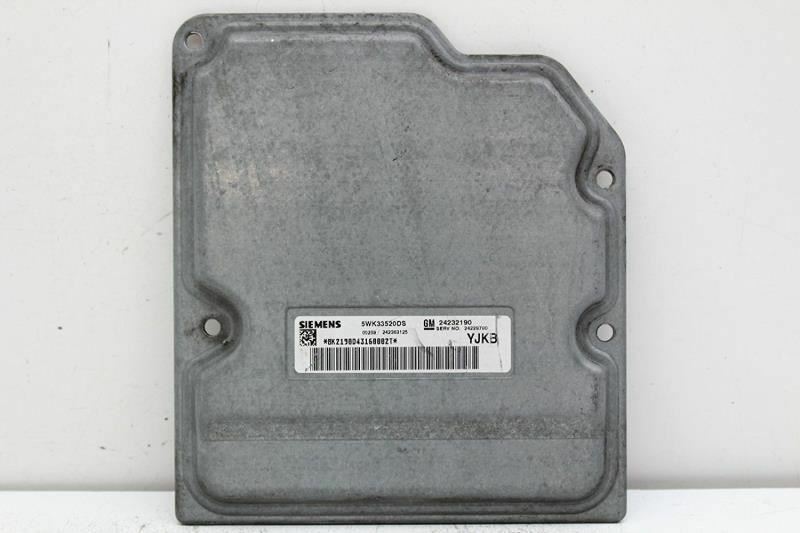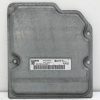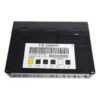Is Your Cadillac CTS Plagued by All-Wheel-Drive Problems?
If you’re experiencing a persistent “Service All Wheel Drive” message, erratic engagement of your AWD system, or a complete lack of power to the front wheels, a failing Transfer Case Control Module (TCCM) is the most likely culprit. In your 2010 Cadillac CTS, this small but critical computer is the brain behind the sophisticated AWD system, responsible for directing torque and ensuring traction in all conditions. When it fails, it can leave you with a vehicle that’s unpredictable and unsafe to drive, especially in poor weather. Don’t let a faulty module compromise your vehicle’s performance. This direct-replacement TCCM, part number 24239785, is the definitive solution to restore your Cadillac’s factory-intended operation.
From the Diagnostic Bay
We had a 2010 CTS come into the shop last winter with the “Service AWD” light glaring on the dash. The owner was frustrated; he said the car felt like it was only rear-wheel drive, and he’d had a few scary moments on icy patches. After hooking up the scanner, we pulled codes pointing directly to a communication failure with the TCCM. A new module from the dealer was expensive, and it would require a separate appointment for programming. Instead, we sourced one of these VIN-programmed modules. The installation was straightforward—it’s located on the right-hand side of the dash. Once plugged in, we cleared the codes, and the car’s AWD system came back to life instantly. The customer was thrilled to have his car’s all-weather capability back without the dealership hassle and cost.
Symptoms of a Failing 2010 CTS Transfer Case Module
A failing TCCM doesn’t always mean a complete system shutdown. It can manifest in various ways as the internal electronics degrade. Pay close attention if your vehicle is exhibiting any of the following signs, as they almost always point to the TCCM.
- ✔ “Service All Wheel Drive” Light: This is the most common and direct indicator that the system has detected a fault within the AWD components, often the module itself.
- ✔ AWD System Inoperative: The vehicle may revert to 2WD mode, and you’ll notice a significant loss of traction from the front wheels during acceleration or on slippery surfaces.
- ✔ Warning Lights on the Dash: You may also see ABS or Traction Control (StabiliTrak) lights, as the TCCM communicates with these systems.
- ✔ Erratic 4×4 Engagement: You might feel shuddering or binding during turns as the transfer case attempts to engage or disengage improperly.
- ✔ Diagnostic Trouble Codes (DTCs): Scanning the vehicle will reveal codes related to the transfer case or loss of communication with the TCCM (U-codes).
The Critical Advantage: VIN-Specific Programming
Why is our module the best solution? Because it arrives at your door ready for installation. Modern vehicle electronics are not interchangeable like parts from older cars. Each module is coded specifically to the vehicle’s Vehicle Identification Number (VIN). This 2010 CTS Transfer Case Module will be professionally flashed with the latest GM-certified software and calibrated precisely to your vehicle’s options and specifications.
This process eliminates the need for:
- Expensive dealership programming fees.
- Towing your vehicle to a shop for installation.
- Specialized, high-cost diagnostic tools like a GM MDI.
Simply provide your VIN during checkout, and we handle the complex part. You receive a true plug-and-play component, making the repair faster, easier, and more affordable. Once installed, your vehicle will recognize the new module as if it were the original, restoring full functionality to your AWD system.
Broad Compatibility Beyond the Cadillac CTS
While this is a perfect solution for the 2010 CTS Transfer Case Module, this versatile control unit, identified by part numbers 24239785, 24235224, or YLMU, is also the correct fit for other GM vehicles, where it may function as a Transmission Control Module (TCM). Please verify your part number and application from the list below:
- Cadillac STS (2007): Transmission Control Module
- Cadillac STS (2010-2011): Transfer Case Control Module
- Cadillac SRX (2007-2009): Transmission Control Module
- Pontiac Solstice (2006-2010): Transmission Control Module
- Saturn Sky (2007-2010): Transmission Control Module
For all these applications, our VIN programming service ensures the module is correctly configured for your specific vehicle’s transmission or transfer case operations.
Frequently Asked Questions
What is VIN programming and why is it necessary?
VIN programming is the process of loading a vehicle’s specific software and calibration files onto a control module. This ensures the module can communicate correctly with the vehicle’s other computers (like the ECU and BCM) and operate its systems according to factory specifications. Without it, the module will not function, and you’ll likely have warning lights and a non-working system.
Where is this module located on a 2010 Cadillac CTS?
On the 2010 Cadillac CTS, the Transfer Case Control Module (TCCM) is typically located inside the cabin, behind the dashboard on the right-hand (passenger) side. Access may require removing the glove box or lower dash panels.
How do I provide my VIN number?
After you complete your purchase, you will receive instructions on how to send us your 17-digit VIN. You can typically add it as a note during checkout or reply to your order confirmation email. We cannot ship the part until we receive your VIN, as the programming is the first step in our fulfillment process.
Is this a difficult part to install myself?
For someone with basic mechanical skills, the physical installation is straightforward. It involves disconnecting the battery, accessing the module, unplugging the electrical connectors, and swapping the part. Since our module is pre-programmed, there is no software or computer work required on your end, making it a DIY-friendly repair.
Will this fix my “Service All Wheel Drive” light for good?
If the diagnostic trouble codes point to a faulty TCCM or a loss of communication with the module, then replacing it with this pre-programmed unit is the correct and permanent fix. However, if the light is caused by a different issue (e.g., a faulty sensor or transfer case motor), this part will not resolve that problem. A proper diagnosis is always recommended.


